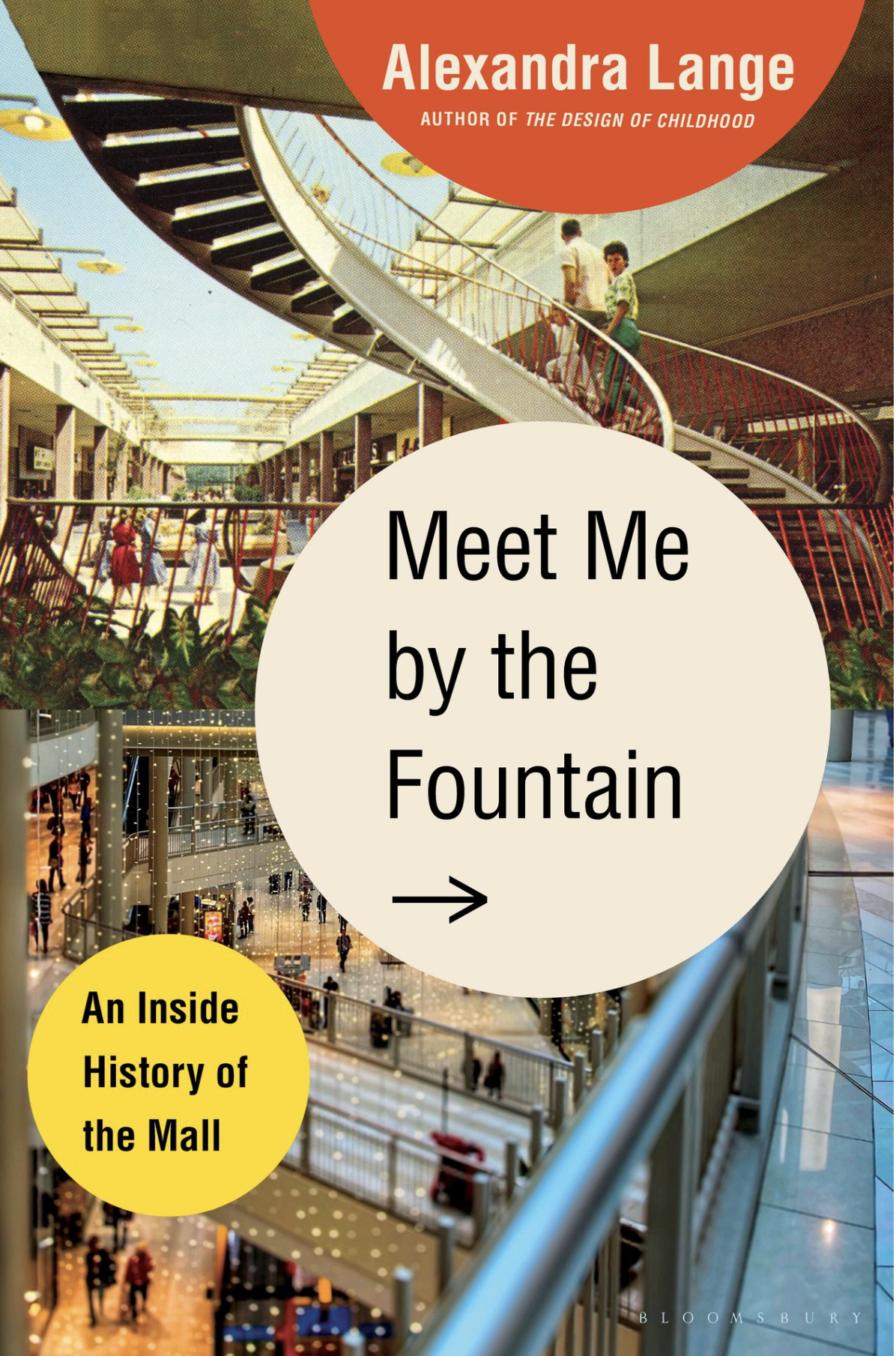You have /5 articles left.
Sign up for a free account or log in.
 Meet Me by the Fountain: An Inside History of the Mall by Alexandra Lange
Meet Me by the Fountain: An Inside History of the Mall by Alexandra Lange
Published in June 2022
Can we learn anything about the future of the university from the history of the shopping mall?
If any lessons connecting malls to colleges are to be found, the starting place is Meet Me by the Fountain. It is hard to imagine a more complete social, architectural, cultural, economic or cross-national comparison of shopping malls than this book provides.
For some, all the detail, theorizing and analysis of the mall's history, relevancy and meaning might be a bit too much. For those looking for clues about how the university might evolve post-pandemic, the deep dive into malls that Meet Me by the Fountain provides is helpful.
The place any book on the shopping mall must start—and where Meet Me by the Fountain begins—is the dead and dying mall. Lange, a design critic, starts the book with a visit to the still nearly empty American Dream mall in New Jersey. This three-million-square-foot behemoth (with 33,000 parking spaces) has a long, troubled and fascinating history.
What American Dream will eventually evolve toward is today unknown. What we know is that the traditional mall, located in the suburbs and designed primarily around the perceived needs of white middle-class shoppers, is a thing of the past.
Meet Me by the Fountain excels in unpacking how and why developers overbuilt and overdeveloped shopping malls, to the point where the U.S. became severely overmalled. As Lange relates, there are today 24 square feet of shopping area for every person in America. In the U.K., that number is 4.6. China, the global center of new mega-mall construction, only has 2.8 square feet of shopping per person.
In the U.S., malls kept being built long after either population growth or consumer demand could justify them. By 2017, there were over 116,000 shopping centers spread across the U.S. Many were dying, and the die-off accelerated during the pandemic.
How is a mall like a college?
What does the mall-killing rise of e-commerce tell us about the potential for online learning to cannibalize the physical campus?
One of the points that Lange makes about the mall is that almost nothing about its future turned out the way its creators predicted. The features, amenities and designs that mall owners thought would motivate shoppers ended up repelling them.
There is little desire among consumers to drive to suburban indoor malls that sell generic goods from national stores. The transactional elements of shopping can be accomplished more efficiently online.
The shopping malls that thrive offer a combination of mixed-use activities, from dining to shopping to recreation. Increasingly, these are outdoor malls that replicate more of an urban feel. Some even include housing.
The irony, of course, is that the mall in the 1970s and 1980s was blamed for helping to kill the downtown urban shopping core. As the suburban mall has fallen out of favor, its survival depends on figuring out how to reintegrate those activities of living, working, recreating and shopping that it did so much to separate.
There is every likelihood that those of us in higher education will be no better at predicting our future than the developers and owners of malls were a decade or two in the past. If mall owners had known what they needed to stay resilient in the face of technological, demographic and competitive changes, they would have done those things.
What we can learn from shopping malls is the necessity of letting go of what once worked. Successful malls continuously pivot. Locally owned stores and restaurants replace anchor stores and national brands. Once occupied by department stores, spaces become libraries, government offices and food stalls.
Like shopping malls, the physical campus will not disappear. It will, however, look and function very differently in the years to come than it does today.
Things we once did at the mall or campus, like shopping and learning, can be accomplished online. We will utilize the physical spaces where people gather, be these spaces malls or campuses, to do things that cannot be done digitally.
Will we see more university classrooms turning into housing and recreation spaces?
Might we come to campus to socialize and connect rather than doing the head-down focused work of academia? And if so, how will our campuses evolve to accommodate the need for groups to gather but do so in ways that are flexible towards an unpredictable public health context?
Reading Meet Me by the Fountain can provide one part of the puzzle in our efforts to construct a different mind-set around the future of physical spaces.
If reading and talking about shopping malls will help us converse about the future of the university as a physical place, count me in.
What are you reading?




